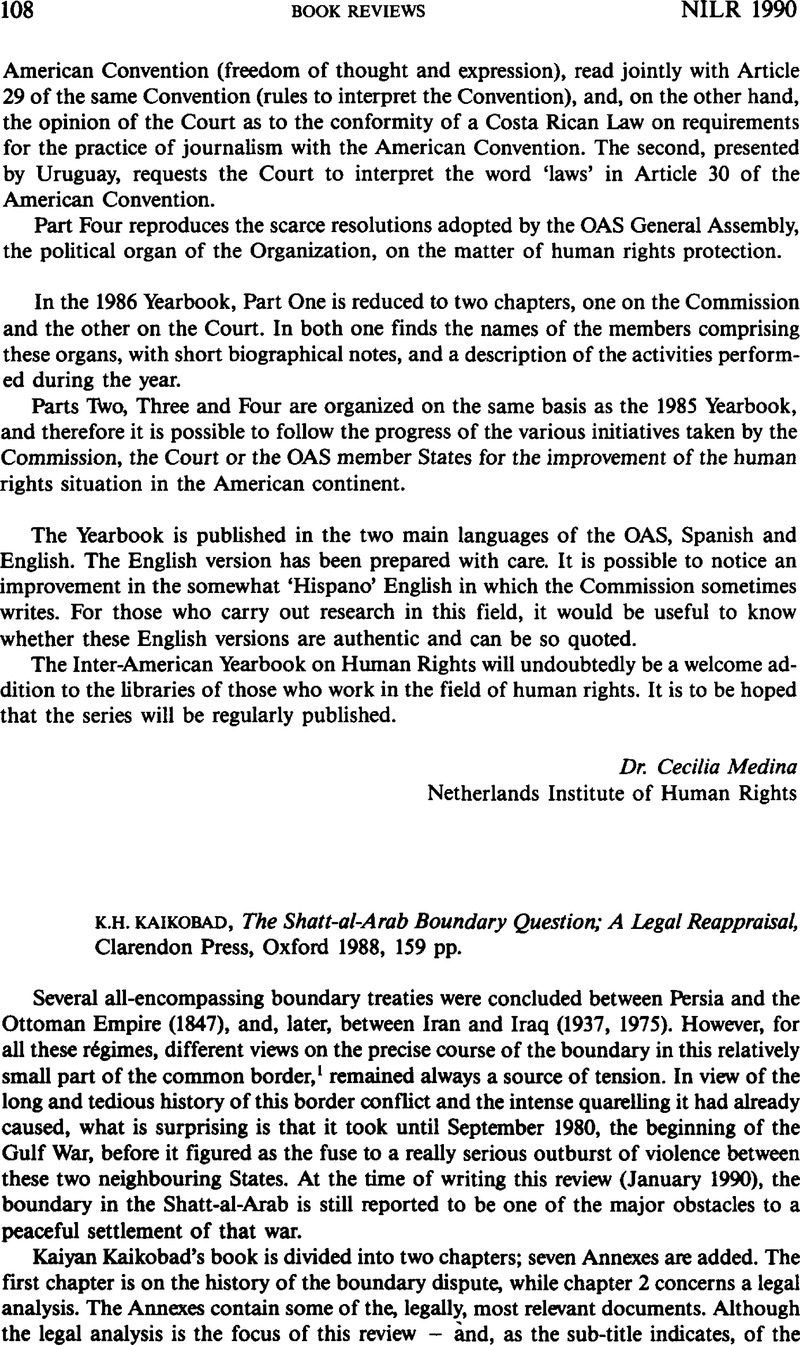No CrossRef data available.
Article contents
K.H. Kaikobad, The Shatt-al-Arab Boundary Question; A Legal Reappraisal, Clarendon Press, Oxford1988, 159 pp.
Published online by Cambridge University Press: 21 May 2009
Abstract

- Type
- Book Reviews
- Information
- Copyright
- Copyright © T.M.C. Asser Press 1990
References
1. The boundary in the Shatt-al-Arab Waterway comprises only about 60 nautical miles of a common border of over 550 miles.
2. UNTS, vol. 1017, no. 14903, p. 193/194.
3. Gehrke, U., Kuhn, G., Die Grenzen des Irak; historische und rechtliche Aspekte des irakischen Anspruchs auf Kuwait und des irakisch-persischen Streites um den Schatt al-Arab (1963)Google Scholar. This book consists of two volumes. Volume I contains the legal and historical analysis; volume II reproduces documents, several of which are of great interest for such an analysis of the conflict between Iran and Iraq.
4. This part of the book consists of a revision of an earlier article: ‘The Shatt-al-Arab River Boundary: A Legal Reappraisal’, 62 BYIL (1985) pp. 49–104Google Scholar.
5. However, by way of consolation, in particular, on aspects of naval warfare law, interest is on the increase (see, e.g., the German Yearbook of International Law (1988) and the Syracuse Journal of International Law and Commerce (1988) Special Issue no. 4, which both contain several contributions of interest in this regard).
6. As reported, e.g., the Netherlands bases its claim to territory in the Ems-Dollard dispute with the Federal Republic of Germany (also) on the Thalweg principle. An authoritative study, in particular, of post-World War II State practice is still painfully lacking.
7. However, it seems to me difficult to share his conclusion (at p. 79) that the Permanent Court of Arbitration in its (1909) Grisbadarna Decision accepted delimitation accorded to the Thalweg ‘as a “rule” of international law’.
8. ‘Perhaps’, because in one of its communications to the Security Council, Iraq has assumed the position that the 1911 Constantinople Protocol is the only instrument in force with regard to the boundary in the Shatt (UN Doc. S/14236).
9. However, I cannot agree with Dr. Kaikobad's more general statement in his Conclusion (at p. 116), where he says that boundary treaties cannot be terminated by unilateral abrogation. I think his reference to Art. 56 of the Vienna Convention (p. 90) is not sufficient in this respect.




